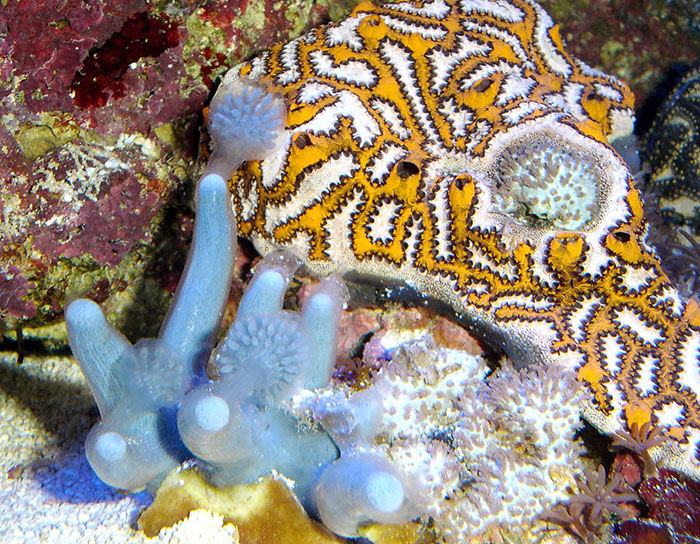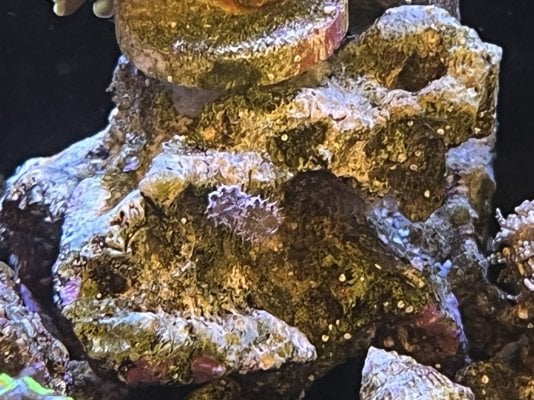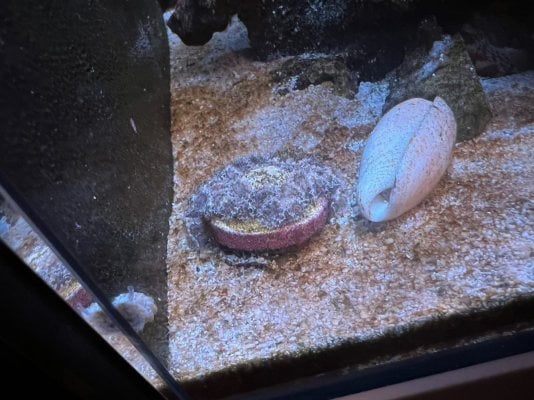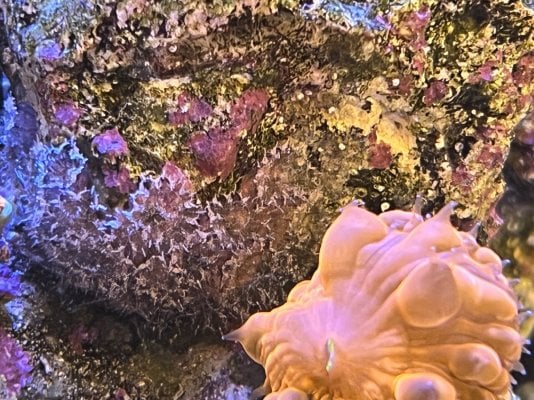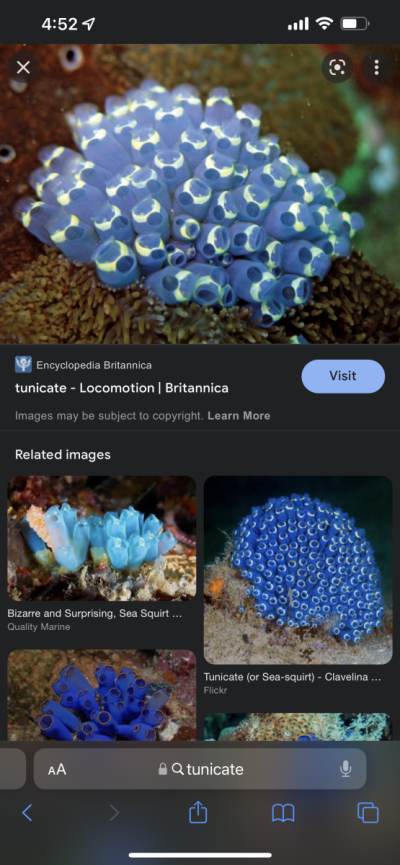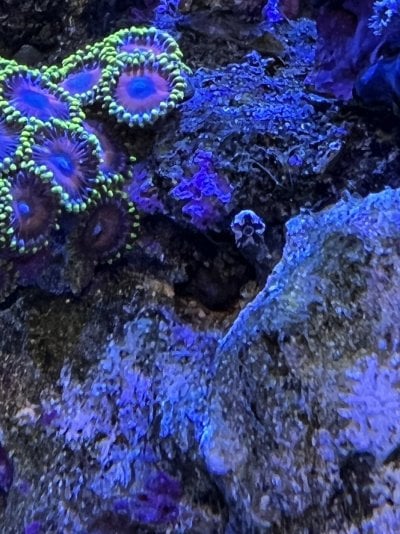So I have these tunicates in both of my 150s and I’m pretty sure I’ve narrowed down the source, but I’m wondering if anyone else has experience with this kind of tunicate. Will they eventually die off? It doesn’t seem like they sting corals to me, but has anyone experienced that?
They are certainly non-photosynthetic as they will only grow under overhangs but not completely on the underside of rocks or in caves where they get no light.
I think they’re interesting but I like my corals way more and the tunicates are spreading like wild fire. I just would rather not have a tank with nothing but tunicates so I’d like to attempt to get out ahead of any issues, if needed.
One tank is 1 1/2 years old, the other is 9 or 10 months old now. I wish I knew more about how they multiply as they’ve spanned two 4 foot tanks fairly quickly.
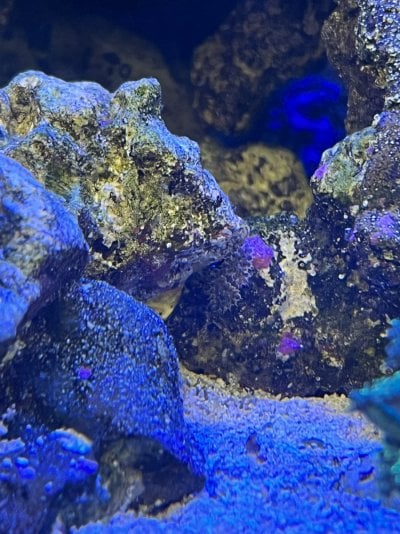
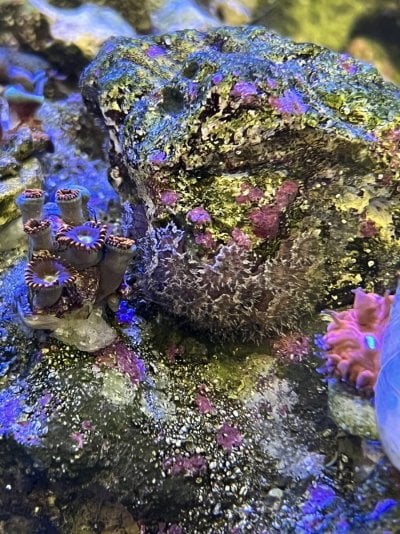
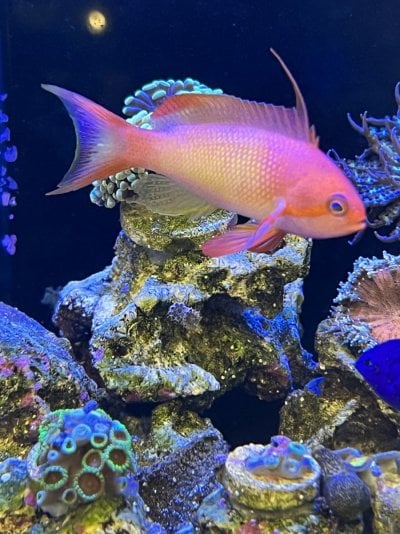
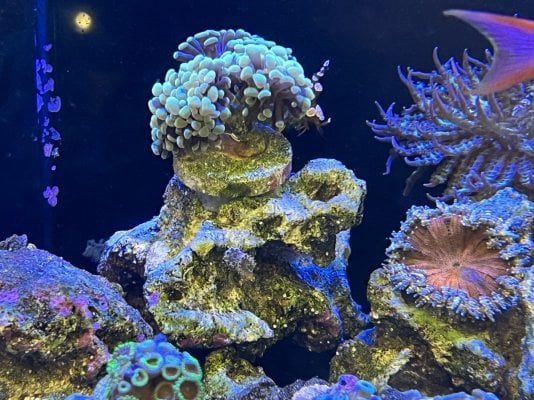
They are certainly non-photosynthetic as they will only grow under overhangs but not completely on the underside of rocks or in caves where they get no light.
I think they’re interesting but I like my corals way more and the tunicates are spreading like wild fire. I just would rather not have a tank with nothing but tunicates so I’d like to attempt to get out ahead of any issues, if needed.
One tank is 1 1/2 years old, the other is 9 or 10 months old now. I wish I knew more about how they multiply as they’ve spanned two 4 foot tanks fairly quickly.












